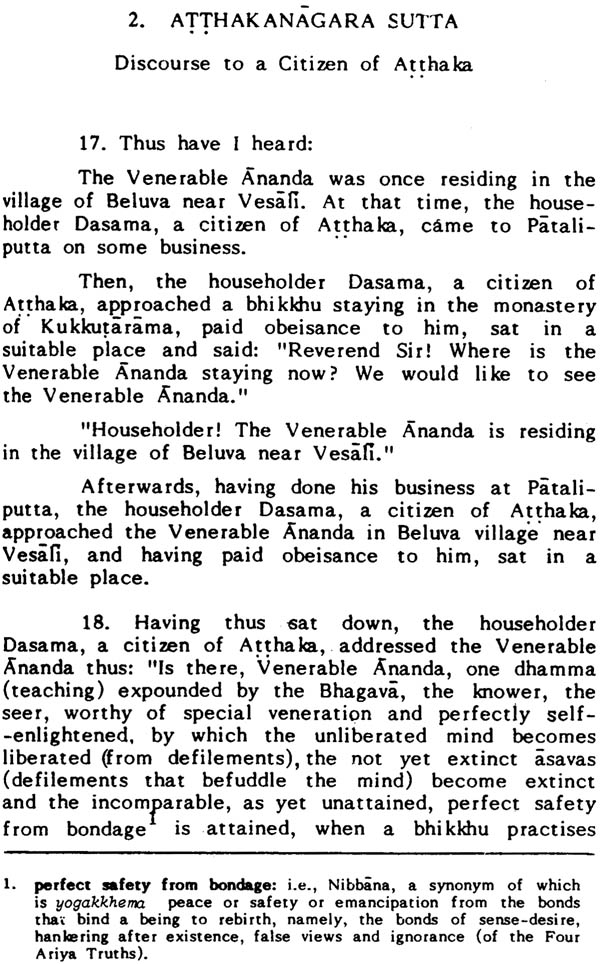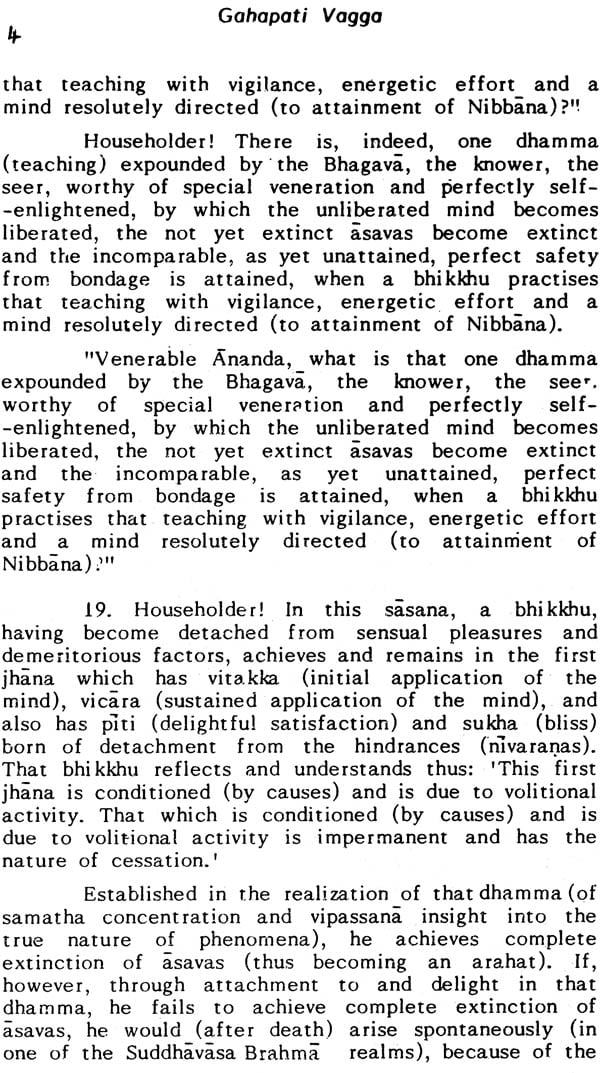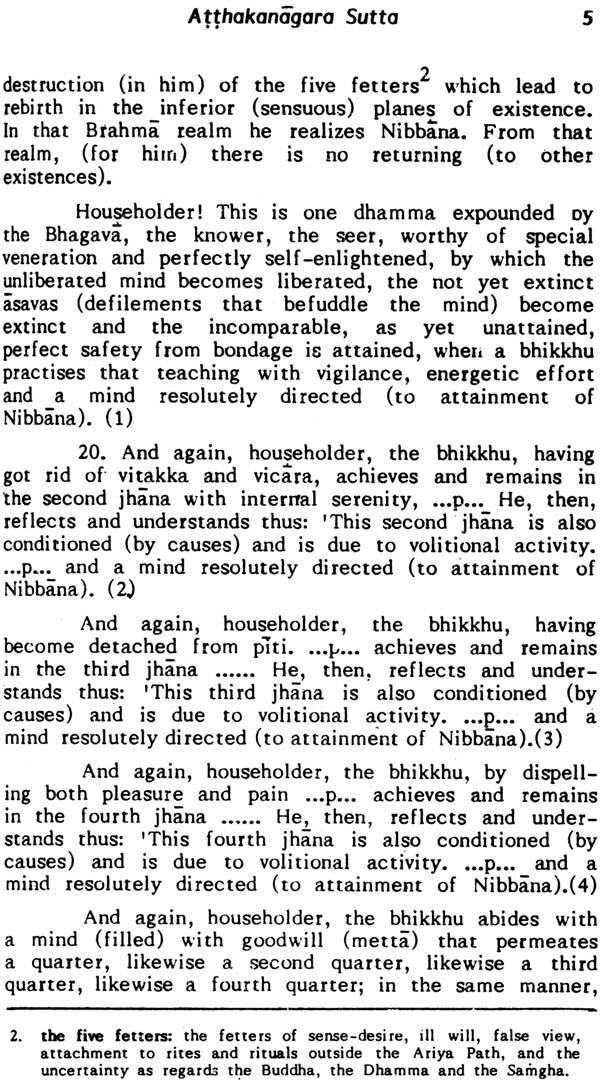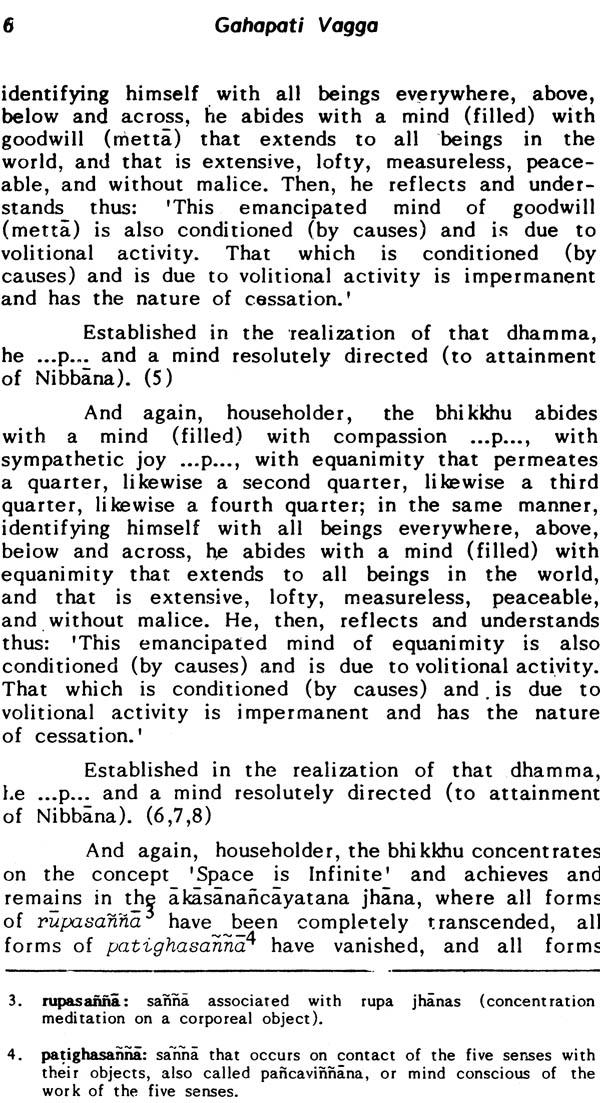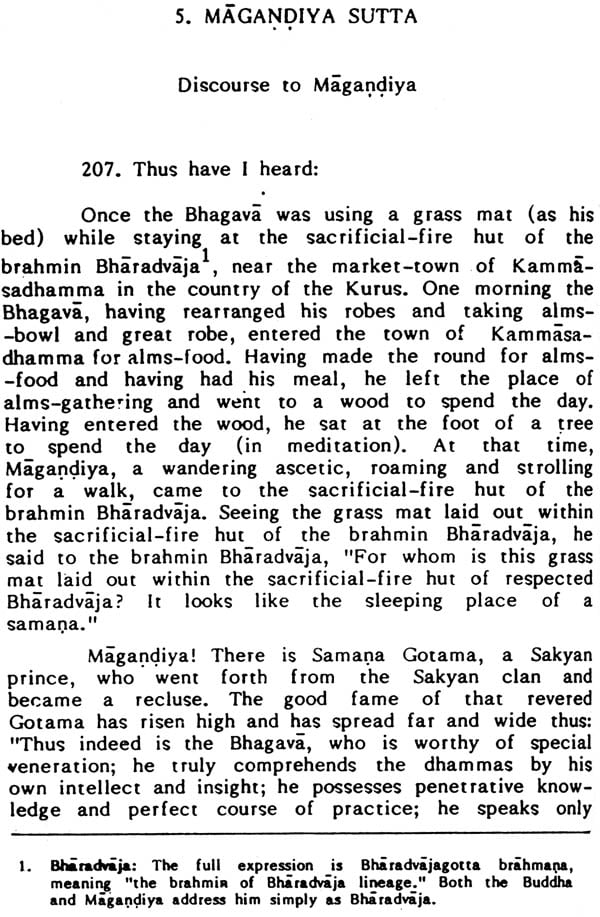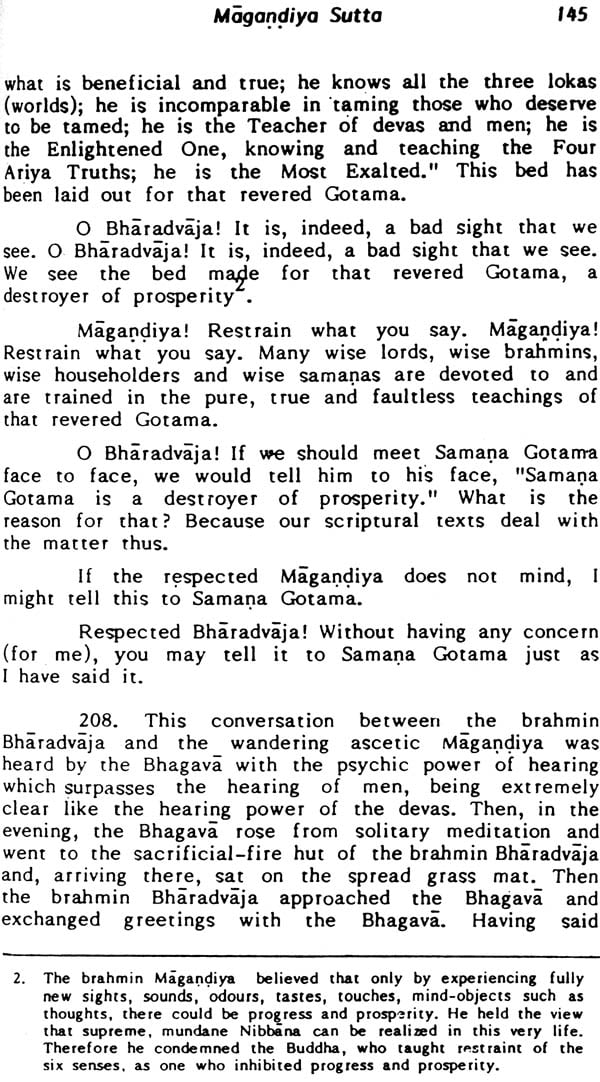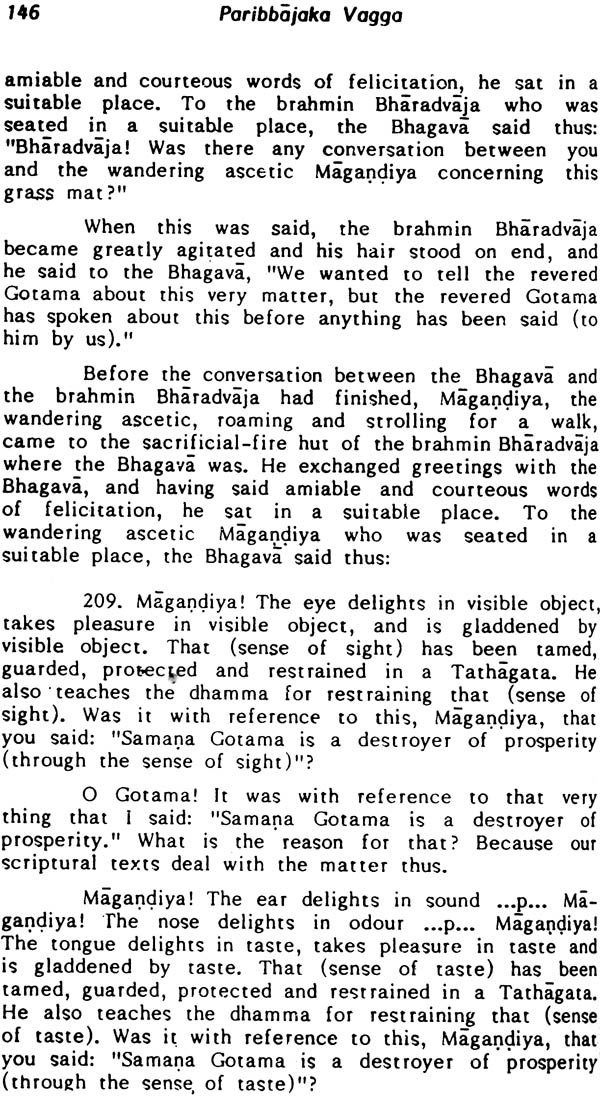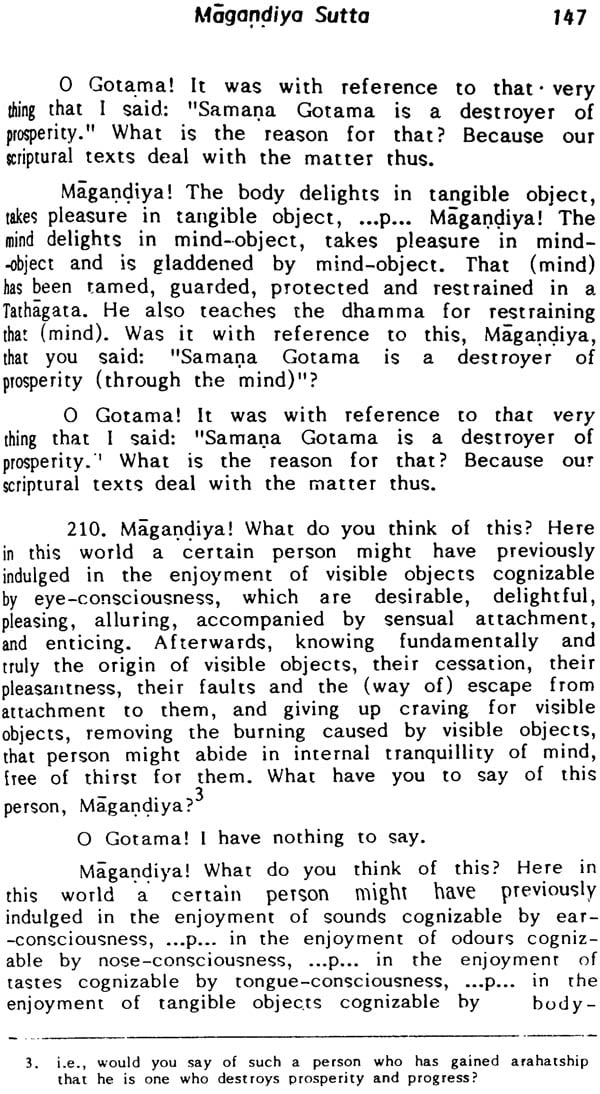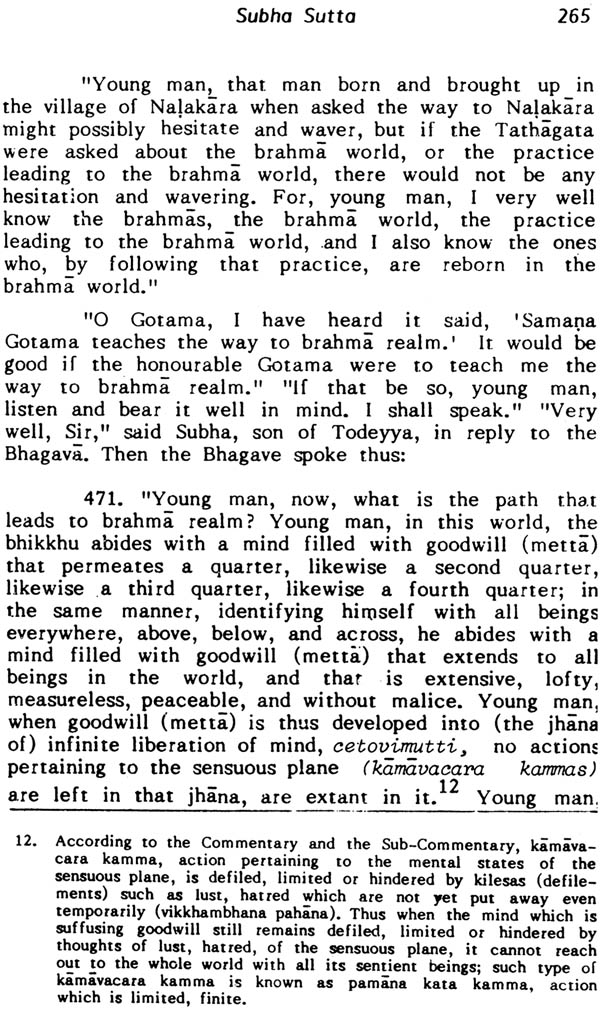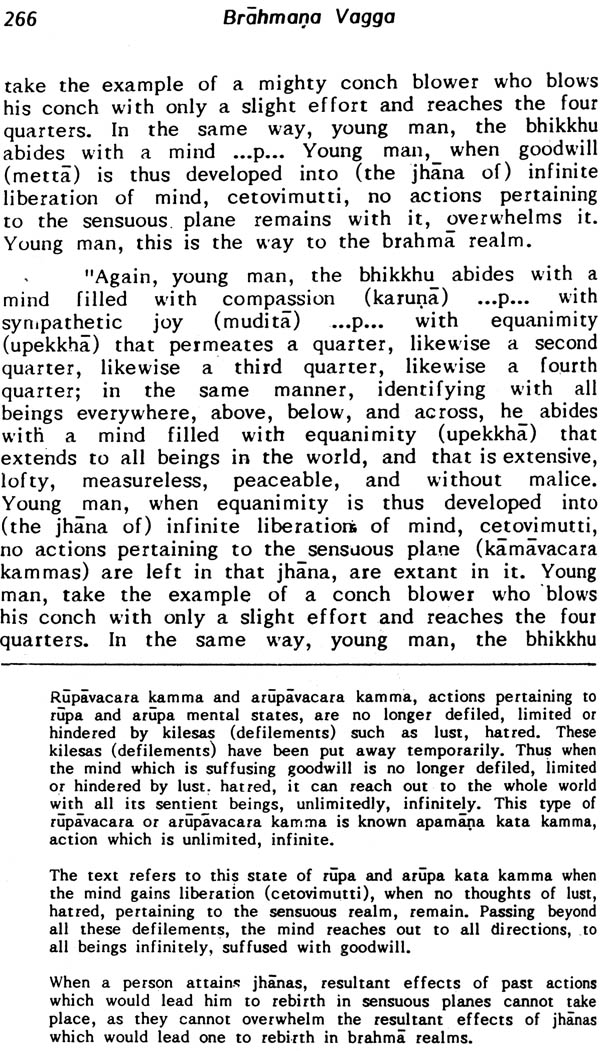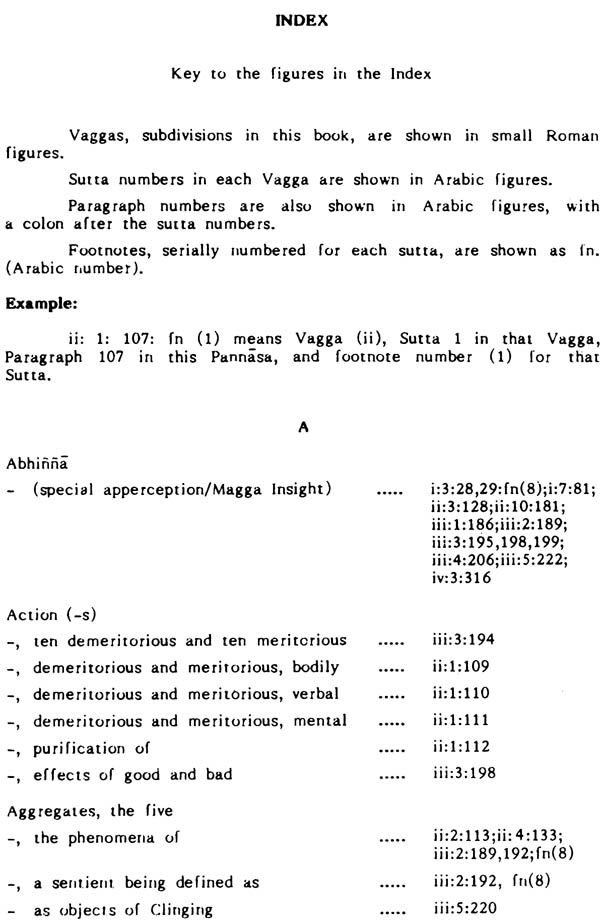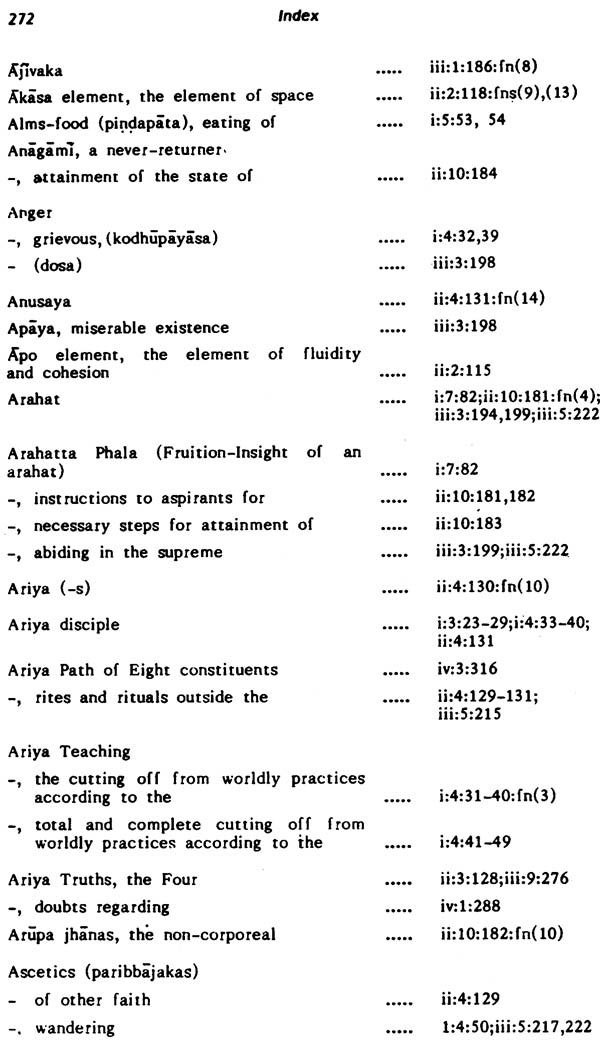
Twenty-Five Suttas From Majjhimapannasa (A Rare Book)
Book Specification
| Item Code: | NAH298 |
| Publisher: | Sri Satguru Publications |
| Language: | English |
| Edition: | 1991 |
| ISBN: | 8170302617 |
| Pages: | 310 |
| Cover: | Hardcover |
| Other Details | 9 inch X 5.5 inch |
| Weight | 470 gm |
Book Description
About the Book
The Majjhima Nikaya has three divisions, viz., Mulapannasa, Majjhima pannasa and Upaniipannasa; each pannasa contains roughly fifty suttas. Each of the three pannasas have five sub-divisions called vaggas. The vaggas from Majjhimapannasa are Gahapati Vagga, Bhikkhu vagga, Paribbajaka Vagga, Raja Vagga and Brahmana Vagga,. The present book is a collection of twenty-five suttas from Majjhimapannasa. The translation contains five suttas from Gahapati Vagga, seven from Bhikkhu vagga, four from Paribbajaka Vagga, six from Raja Vagga and three from Brahmana Vagga...
The translation contains notes and an Index.
Introduction
The Pali Texts which embody the teachings of the Buddha can be classified into two ways, either as Pitakas or as Nikayas. When they are classified as Pitakas they are divided into three categories which are known as the three Pitakas or Baskets. The three Pitakas are the Vinaya (containing the Rules of Conduct for the Buddhist Order), the Suttanta (containing the sutras or discourses), and the Abhidhamma (containing the Buddha's exposition of Ultimate Realities). The Vinaya Pitaka prescribes Rules of Conduct for bhikkhus and bhikkhunis and is concerned mainly with the observance of precepts of morality (Sila) and the Abhidhamma Pitaka is concerned mainly with the study leading to insight (Panna). The Suttanta Pitaka, however, is concerned not only with precepts of morality (Sila) , but also with concentration (Samadhi) and attainment of insight (Panna). In fact, the term 'sutta' literally means thread or string. A string serves as a plumb-line to guide the masons and carpenters in their work; a string also threads flowers into a garland; Generally, the sutras are expositions of the dhamma stated simply and clearly to suit the occasion and the intellectual level of the audience.
The Suttanta Pitaka consists of five Nikayas or collections, viz., Digha•Nikaya or Collection of long discourses, Majjhima Nikaya or Collection of medium length discourses, Samyutta Nikaya or Collection of groups of related discourses, connected or related in subject matter or in persons concerned, Angutrara Nikaya or Collection of numerically-graduated divisions, and Khuddaka Nikaya or Collection of miscellaneous treatises. The Anguttara Nikaya has eleven divisions; starting with the first division containing discourses each dealing with one subject, it goes on to the second division containing discourses each dealing with two subjects, then to the third division containing discourses each dealing with three subjects and so on up to the eleventh division containing discourses each dealing with eleven subjects. The Khuddaka Nikaya is an omnibus collection containing the suttas not included in the first four Nikayas.
When the Pali Texts as a whole are classified into Nikayas, the five books of Vinaya and the seven books of Abhidhamma are also included in the Khuddaka Nikaya.
The Majjhima Nikaya has three divisions, viz., Mulapannasa, Majjhimapannasa and Uparipannasa; each pannasa contains roughly fifty suttas. Mulapannasa has fifty, Majjhimapannasa has fifty and Uparipannasa has Fifty-two suttas, thus bringing the total to one hundred and fifty-two suttas. Each of the three pannasas has five sub-divisions called vaggas. The vaggas from Majjhimapannasa are Gahapati Vagga, Bhikkhu Vagga, Paribbajaka Vagga, Raja Vagga and Brahmana Vagga. The first three were translated by U Htin Fatt, and the remaining two by U Ko Lay. The preliminary editing of the translations was done by U Myo Min, Additional Chief Editor, with the assistance of U Tin Nwe, Editor.
The Myanmar Pitaka Association has already published one book from Majjhima Nikaya, containing twenty-five surtas taken from Mulapannasa. The present book is a collection of twenty-five suttas from Majjhimapannasa. We have taken five surtas from Gahapati Vagga, seven from Bhikkhu Vagga, four from Paribbajaka Vagga, six from Raja Vagga and three from Brahmana Vagga. This book will be followed by another collection of twenty-five suttas from Uparipannasa of Majjhima Nikaya.
The Twenty-five Suttas from Majjhimapannasa-In the Pali Text the discourses in the Majjhima-Pannasa are grouped under five different heads depending on the predominant class in the composition of the audience to which they were addressed. All the discourses were given by the Buddha, with the exception of a few given by his eminent disciples like the Venerable Ananda and the Venerable Sariputta. In delivering these discourses the Buddha sometimes related his own experience of enjoyment of life and of his renunciation, as in the Magandiya Sutta. There are also two suttas in Raja Vagga where the Buddha recounted his life as a Bodhisatta in the previous aeons. In the Ghatikara Sutta (iv:1) the Buddha related an episode in his life as jotipala in the time of Kassapa Buddha when his friend, Ghatikara the potter, dragged him along by force to see Kassapa Buddha. Maghadeva Sutta (iv:3) is about King Maghadeva, who started the tradition of renouncing the household life by leaving the luxurious life of a king to a successor when the messenger of death appeared in the form of grey hair.
Many of the discourses are straightforward exhortations, given by the Buddha on his own initiative, some are replies to questions asked by householders, bhikkhus, ascetics, the royalty and brahmins, covering a wide range of subjects. Brief notes on some of these suttas are as follows:
Discourses Given on the Buddha's Own Initiative-The Buddha's exhortation given to his son Rahula at the age of seven (Ambalatthikarahulovada Sutta) (ii:1) and at the age of eighteen (Maharahulovada Sutta) (ii:2) are examples of straightforward exhortations given on the Buddha's own initiative. Samanera Rahula at the early age of seven was taught the importance of speaking the truth, for one who is not ashamed to tell lies would not hesitate to do any evil deed. He was also told to exercise care in his thought, word and deed, always bearing in mind the consequences that might befall him as well as others. At the age of eighteen Rahula was taught to exercise mindfulness of the khandhas, mindfulness of breathing and of the four primary elements.
The Catuma Sutta (ii:5) is another example of straightforward exhortation given by the Buddha. Once, while the Buddha was staying at Catuma village, five hundred. bhikkhus who came with the Venerable Mahamoggallana and the Venerable Sariputta made a lot of noise while settling down. To them the Buddha pointed gut the dangers facing bhikkhus who had just entered the Order, as in the case of a man who entered turbulent waters. These are: ill will towards one's teachers, likened to the danger of surging waves of the sea; improper eating and drinking, likened to the danger of crocodiles; enjoyment of sense pleasures, likened to the danger of whirlpools; and lust for women, likened to the danger of sharks.
Contents
| (i) Gahapati Vagga | |
| Atthakanagara Sutta | |
| Discourse to a Citizen of Atthaka | 3 |
| Sekha Sutta | |
| Discourse on One who is Training Himself | 10 |
| Potaliya Sutta | |
| Discourse to Potaliya | 20 |
| Jivaka Sutta | |
| Discourse to Jivaka | 33 |
| Kukkuravatika Sutta | |
| Discourse Regarding One Practising the Canine Way | 47 |
| (ii)Bhikkhu Vagga | |
| Ambalatthika Rahulovada Sutta | |
| Exhortation to Rahula at Ambalatthika | 47 |
| Maha Rahulovada Sutta | |
| The Major Discourse of Exhortation to Rahula | 55 |
| Cula Malukya Sutta | |
| The Lesser Discourse to Malukya | 65 |
| Maha Malukya Sutta | |
| The Major Discourse to Malukya | 73 |
| Catuma Sutta | |
| Discourse at Catuma | 83 |
| Kitagiri Sutta | |
| Discourse at Kitagiri | 92 |
| (iii) Paribbajaka Vagga | |
| Tevijjavaccha Sutta | |
| Discourse to Vaccha on the Threefold Knowledge | 109 |
| Aggivaccha Sutta | |
| Fire Simile Discourse to Vaccha | 144 |
| Mahavaccha Sutta | |
| The Major Discourse to Vaccha | 124 |
| Dighanakha Sutta | |
| Discourse to Dighanakha | 137 |
| Magandiya Sutta | |
| Discourse to Magandiya | 144 |
| Culasakuludayi Sutta | |
| The Shorter Discourse to Sakuludayi | 160 |
| (iv) Raja Vagga | |
| Ghatikara Sutta | |
| Discourse about Ghatikara | 175 |
| Maghadeva Sutta | |
| Discourse on Maghadeva | 187 |
| Piyajatika Sutta | |
| Discourse on Love as the Origin of Unhappiness | 198 |
| Bahitika Sutta | |
| The Bahiti Cloth Discourse | 205 |
| Kannakatthala Sutta | |
| Discourse at Kannakatthala | 212 |
| (v) BrahmanaVagga | |
| Canki Sutta | |
| The Canki Discourse | 225 |
| Esukari Sutta | |
| Discourse to Esukari | 243 |
| Subha Sutta | |
| Discourse to Subha | 253 |
| Index | 271 |
